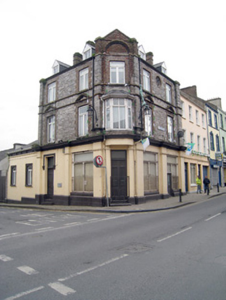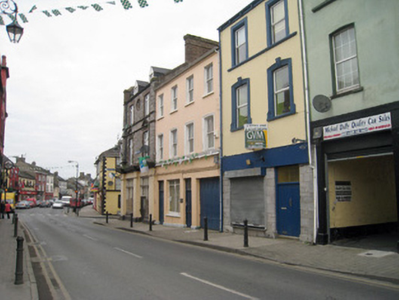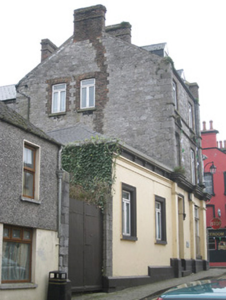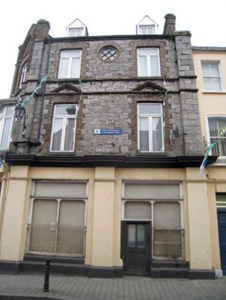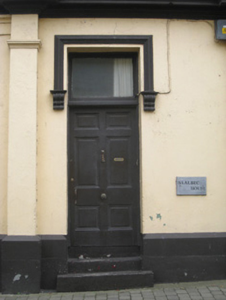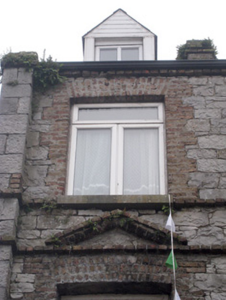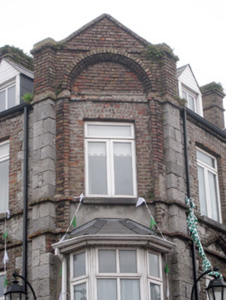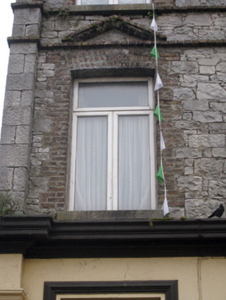Survey Data
Reg No
21813033
Rating
Regional
Categories of Special Interest
Architectural, Artistic
Original Use
House
Historical Use
Shop/retail outlet
Date
1820 - 1840
Coordinates
160957, 127667
Date Recorded
16/11/2007
Date Updated
--/--/--
Description
End-of-terrace corner-sited two-bay three-storey with dormer attic house, built c. 1830, having chamfered entrance bay to north elevation with brick pediment, canted oriel window to first floor, and two-bay single-storey extension to south elevation. Pitched slate roof with brick chimneystacks. Dressed limestone walls to first and second floors, with limestone strip quoins and brick stringcourse. Rendered walls to ground floor having render pilasters, plinth course and moulded render cornice. Square-headed openings to dormer attic with replacement uPVC windows. Square-headed openings to second floor with brick block-and-start surrounds, limestone sills and replacement uPVC windows. Oculus to second floor, north-east elevation having brick surround and quarry glazed window. Square-headed openings to first floor with brick pediments, block-and-start surrounds, limestone sills and replacement uPVC windows. Square-headed openings to oriel having replacement uPVC windows. Square-headed display openings with glazed overlights over bipartite fixed glazed windows having cast-iron sill guards. Square-headed opening to chamfered corner with glazed overlight over double-leaf timber panelled doors. Square-headed opening to west elevation having render hoodmoulding with ornate stops and glazed overlight over timber panelled door.
Appraisal
The house is an important component of the Kilmallock streetscape, with one façade fronting onto Wolfe Tone Street and a complementary façade fronting Lord Edward Street. The construction in dressed limestone reveals high quality stone masonry, particularly to the decorative detailing which may date to the latter part of the nineteenth century. It was built supposedly in imitation and to complement the medieval houses that were once in Kilmallock but have now gone. Kilmallock was known as 'The Baalbec of Ireland' because of the prevalence of so many ruined structures. The building is also of significance, representing the continued economic prosperity of Kilmallock into the late nineteenth century.

